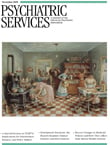Letter
An Early Example of Culturally Competent Services
To the Editor: In their article in the August issue, Hernandez and colleagues ( 1 ) stated that "cultural competence occurs when there is compatibility among four important factors: community context, cultural characteristics of local populations, organizational infrastructure, and direct service support." In their otherwise comprehensive literature review, it is astonishing that they failed to find, in their own state, an early research-based model that exemplified all of these characteristics.
In the 1970s and 1980s the University of Miami-Jackson Memorial Community Mental Health Center (CMHC) developed a model based on prior community research and community outreach techniques similar to those in the applied example used by Hernandez and colleagues, the African-American Family Services of Minneapolis. The Miami CMHC served a multiethnic inner-city catchment area with five ethnic community teams that were based on the demographic characteristics of the center's neighborhoods and an assessment of their needs. The teams, African American, Bahamian, Cuban, Haitian, and Puerto Rican, were composed of clinical and social scientist staff matched to the ethnicity and language of the neighborhoods.
In addition to providing outreach and helping the communities access needed resources, the center offered crisis, inpatient, consultation, and referral services and developed nine neighborhood mini-clinics that served outpatient and aftercare clients in their own localities. Extensive case management was also provided, because research had demonstrated that environmental interventions can improve therapeutic outcome ( 2 ). At a time when dropout rates as high as 75% were reported for African-American and Hispanic clients, this CMHC had a mean dropout rate of 4%, with a high of 12%. With respect to keeping appointments, normative evaluation data indicated no-show rates ranging from 40% to 56% for African-American and Hispanic clients. This CMHC had a mean no-show rate of 9.7% ( 3 ).
The program went on to develop a national cross-cultural training institute for mental health professionals, which trained nearly 200 clinical and administrative staff and produced its own research data on organizational changes in culturally competent care ( 4 ). The program eventually became freestanding as New Horizons CMHC; however, despite its success, it has had to vastly reduce its services. We may develop many ideal models, but unfortunately, programs rich in cultural competence cannot persist without adequate funding and zeitgeist support.
1. Hernandez M, Nesman T, Mowery D, et al: Cultural competence: a literature review and conceptual model for mental health services. Psychiatric Services 60:1046–1050, 2009Google Scholar
2. Lefley HP: Environmental interventions and therapeutic outcome. Hospital and Community Psychiatry 30:341–344, 1979Google Scholar
3. Lefley HP, Bestman EW: Public-academic linkages for culturally sensitive community mental health. Community Mental Health Journal 27:473–488, 1991Google Scholar
4. Lefley HP: Cross-cultural training for mental health professionals: effects on the delivery of services. Hospital and Community Psychiatry 35:1227–1229, 1984Google Scholar



